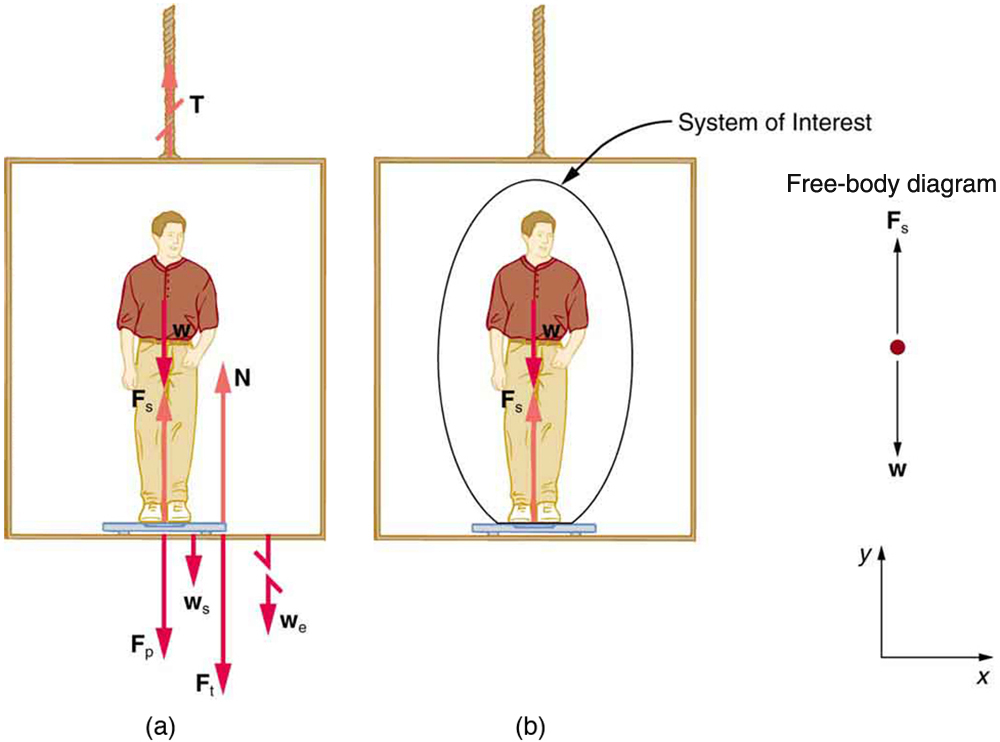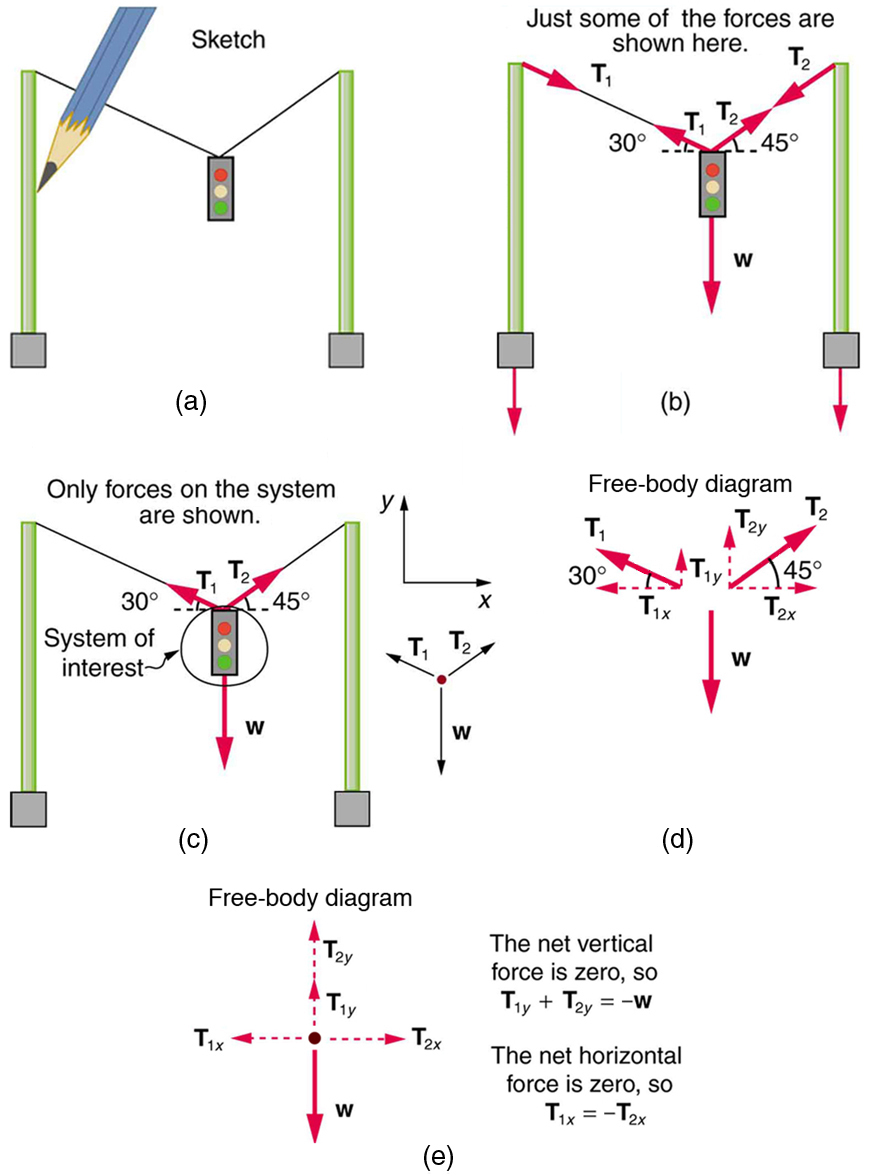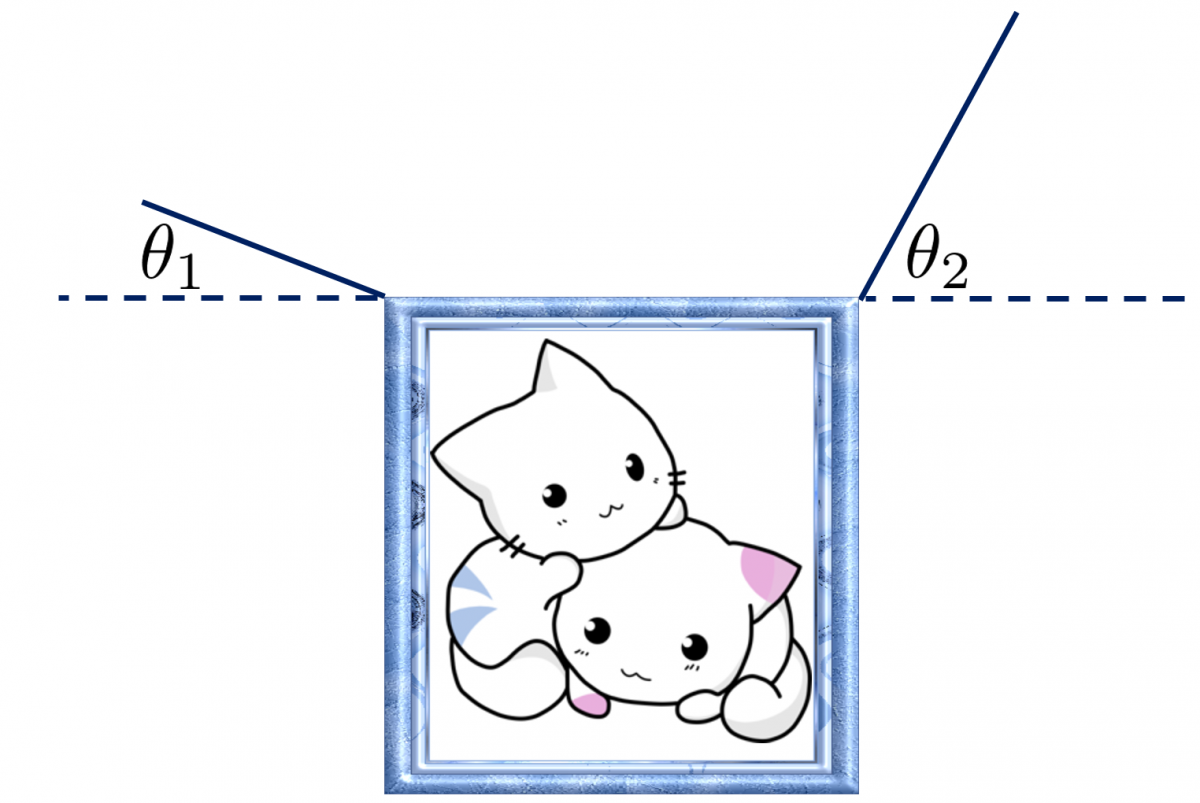BoxSand's Resources
Introduction

Free Body Diagrams (FBDs) are a pictorial representation of all of the external forces on an object. It starts as a simple dot representing your system. Then all of the forces are drawn, including relative size and direction. An axis must also be included to indicate which direction(s) are positive. Also, if a tilted axis is appropriate, such as in Inclined Planes then the tilted axis should be included as well as all relevant angles.

Translating FBDs is the most important tool you have for solving any problem involving forces. Translating a FBD involves using a FBD to break up all of the forces into their respective x and/or y components, identifying which components are going to be positive or negative, and summing up all the components in each given direction separately. You create an algebraic expression that is Newton's 2nd law with the aid of the FBD. This basic step will be the same for any force problem that we will ever do.
Videos
Pre-Lecture Videos
What is a Force? (5 min)
Types of Forces? (8 min)
Steps to solving mechanics problems
Free Body Diagram Fundamentals (15 min)
Web Resources
Text
Here is a chapter from the OpenStax textbook related to free body diagrams;
This is a concise description of free body diagrams;
Follow along in this interactive tutorial by W.W. Norton & Company about FBD;
Here is a slide show demonstrating how to use free body diagrams with examples
Other Resources
This link will take you to the repository of other content related resources.
Videos
He shows you how to make a Flipping FBD (free-body diagram).
https://www.youtube.com/watch?v=pA9Uc_rJNiA
This video is very clear and discusses how to set up an easy to use free body diagram.
https://www.youtube.com/watch?v=BuPfDI7TyL0
Three part video series from the people at physics help.
https://www.youtube.com/watch?v=jHCsMXpYGAc
https://www.youtube.com/watch?v=eniPc9gUMy0
https://www.youtube.com/watch?v=8AcjOJAb8qA
Other Resources
This link will take you to the repository of other content related resources.
Simulations
This PHet simulation allow you to view changing magnitudes of the force vectors in a FBD;
This is a nice tool that will help you understand how to construct free body diagrams
Here is a simple interactive to help you understand how to properly arrange force vectors,
For additional simulations on this subject, visit the simulations repository.
Demos
Practice
Fundamental examples
Draw the free body diagrams for the following systems.
1. The system of a picture of 2 cats in a box hanging from 1 vertical string in the center.
2. The system of a picture of 2 cats in a box hanging from 2 strings at the given angles.
CLICK HERE for solutions.
Short foundation building questions, often used as clicker questions, can be found in the clicker questions repository for this subject.
Practice Problems
BoxSand's Quantitative Practice Problems
BoxSand's Multiple Select Problems
Recommended example practice problems
Physics Classroom FBD w/ answers
For additional practice problems and worked examples, visit the link below. If you've found example problems that you've used please help us out and submit them to the student contributed content section.

